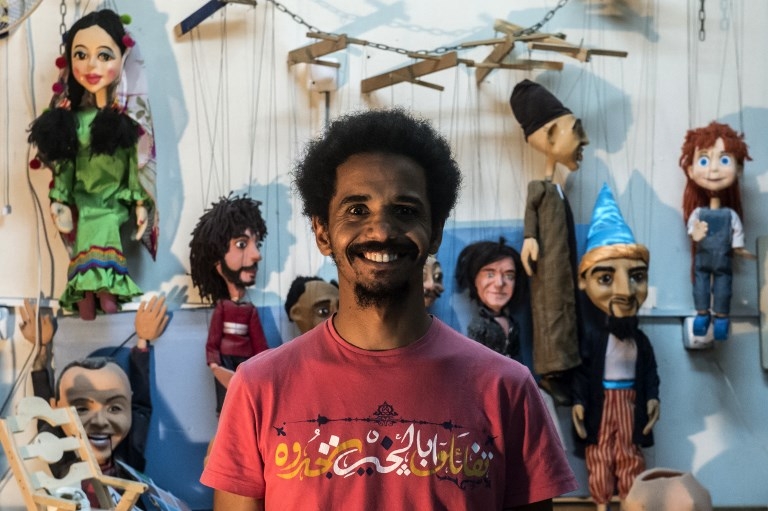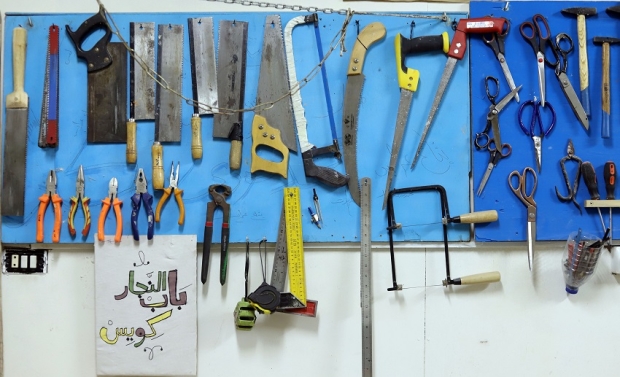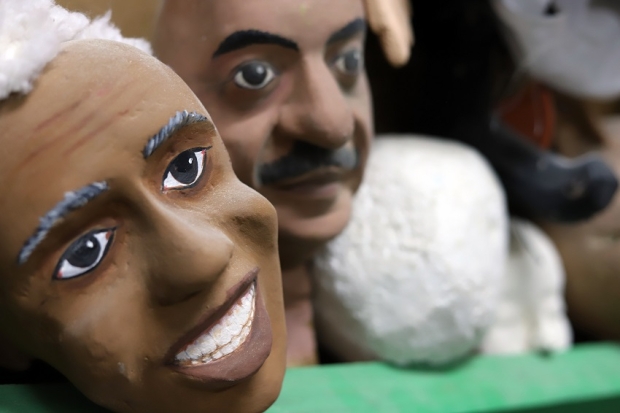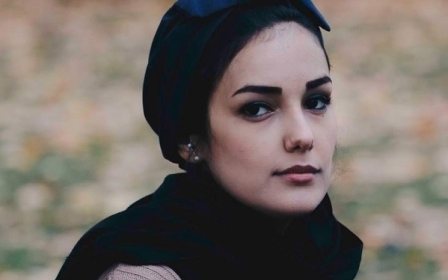The man behind the curtain: Cairo's puppet master brings his 'children' to life

CAIRO – Mohamed Bakkar spends most of his time in a small workshop in Zamalek, an upscale neighbourhood set on a Nile island, surrounded by dozens of colourful puppets he designed and created himself.
An impressive array of tools, from hammers to screw drivers, hang in an orderly fashion on the wall above a sign that plays on the famous Egyptian proverb “The carpenter’s door is lose,” instead saying that “The carpenter’s door is in good shape.”
Among the puppets is Khadra, whose braided hair is adorned with a bright scarf and whose colourful traditional Egyptian dress is complemented by large pink earrings.
Another puppet, Hussein, sports a 1970s look: a bright buttoned-down shirt and long dark brown hair. While he talks, Bakkar effortlessly pulls up and down on Hussein's attached strings, making the puppet dance. The wooden marionettes take him from one week to 20 days to design and carve to perfection.
The 32-year old marionette puppeteer and puppet maker says he draws inspiration from average Egyptians “you could see on the streets,” as well as a few famous celebrities.
Although they are carved out of wood, each puppet needs a rounded personality. This is usually developed with different features, costumes and unique voices - all of which is not a simple task for the puppeteer.
“We do play backs in a studio to make sure that the voices are done properly and that the puppeteer is able to maintain the same voice, pronunciation, and language,” Bakkar says. “Sometimes it is expensive to go to the studio, so in that case we can practise the play a few times at a cafe or a house.”
Crafting legends
One of Bakkar’s creations is a marionette of the legendary Egyptian singer Umm Kulthum, who was created as part of a project to stage re-enactments of the singer’s iconic concerts, which were held at the peak of her fame before she fell ill in 1972 and later died in 1975.
On the first Thursday of each month, the streets in Egypt would fall silent as people gathered at their homes to hear Umm Kulthum’s strong, yet velvety voice waft through the airwaves on their radio sets. Bakkar explains how the star puppet must mimic Umm Kulthum’s every move with precision during the performance.
Bakkar’s first serious work experience was in 2006 when he made a puppet for Abdel Halim Hafez, one of the most popular Arabic singers of all time, and his choir.
The recreation of Hafez and Umm Kulthum’s concerts are held regularly at the Sakia Puppet Theatre, hosted by the Sawy Cultural Wheel, a popular cultural hub in Zamalek. “[The puppets] came out nicely, and they are still using them until now,” he says.
The Sawy Cultural Wheel hosts two to five puppet shows a month, including one called The Yellow Frog, which stars a few of Bakkar’s hand-made puppets. It tells the story of a frog that turned yellow as the Nile became polluted. The amphibians inhabiting the Nile then unite to try to save their home and themselves from contamination.
I am completely convinced that the puppet is the hero
- Mohamed Bakkar, puppeteer
Each show lasts from 20 minutes to one hour and attracts both children and adults, according to Bakkar.
Yasmine, one of Bakkar’s other marionettes with black curly hair, big blue eyes, and a pink hat, is the child protagonist of the play, El Hakeem Tut, which was inspired partly by The Wizard of Oz. Yasmine, Bakkar narrates, “is a mischievous child... Throughout the play, she encounters different friends, each trying to solve a problem, and from whom she learns the importance of working together.“
Marionette theatre began to disappear in the 1990s - people found it easier to put their kids in front of the TV
- Mohamed Bakkar, puppeteer
“As a marionette maker and a puppeteer I am completely convinced that the puppet is the hero,” he says. “I work behind a curtain, which is actually more comfortable because it leaves more room for creativity without the anxiety.”
While growing up in Egypt’s Bahariya Oasis in the Western Desert south-west of Cairo, Bakkar did not encounter puppets until 2005 in his fourth year at the Faculty of Art Education in Zamalek.
“We were studying traditional costumes and we had to apply [the costume designs] to the puppets,” says Bakkar. “It incorporated so much art that I had already loved: drawing, sculpting, designing.”
Though the choice could be construed by some as having a political message, he says his creation was not for political purposes but rather for Nazif's aesthetics.
“It was because Nazif’s features make for a great puppet: his tall figure, broad shoulders, his full head of hair and thick white moustache,” he says.
The Golden age
According to Bakkar, Egypt’s marionette theatre is gradually coming back to life for the first time since its golden age in the 1960s, which was marked by popular performances such as El-Leila El-Kebeera (The Grand Night) operetta, which started as a radio show before it was adapted into a well-known puppet show.
The operetta, written by prominent Egyptian poet and cartoonist Salah Jaheen, is inspired by the traditional moulid street festivals, which celebrate the birth of local religious figures with Sufi chanting and folk dancing. The play has become a household name and a hallmark of Egyptian theatre and was re-enacted as a ballet performance.
My puppets are my children
- Mohamed Bakkar, puppeteer
“Going to watch marionette plays became part of popular culture,” Bakkar explains. “The state also supported this and it cared to send artists to learn in Europe.”
In 1989, the Egyptian star Omar al-Sharif played the lead role of a proud puppeteer in rural Egypt in the hit film Al-Aragoz. In the movie, Sharif's character tries to raise people’s awareness and fight fraud through the simplicity of his puppet shows while his son is seduced by power and corruption in the capital Cairo.
By the 1990s, marionette theatre gradually began to disappear, washed out by cartoons and animated characters. “People found it easier to just put their kids in front of the TV,” Bakkar laments.
However, he believes that puppets are undergoing a renaissance. “There are young artists who love puppets and want to pass that on to coming generations, and slowly, people are starting to go to the theatre.”
Still, more work needs to be done and Bakkar says the ancient craft faces obstacles. “We have no academic setting to teach the art of controlling marionettes, no festivals, and no high quality material to go into making the puppets.”
Holding the strings
When Bakkar pulls at the strings and controls the marionettes' movements from behind the wooden stage, he becomes one with the puppets.
“If I do not become the puppet, then I won’t be able to perform,” the marionette designer and puppet show director tells Middle East Eye. “It is a feeling that cannot be explained.”
According to Bakkar, in order to be a talented puppet master, one must treat their marionettes delicately with care, subtly controlling and responding to them simultaneously.
Still, Bakkar doesn’t play favourites. “There is no such thing as a favourite puppet for me. They all take effort and they all mean something to me," he says.
“My puppets are my children."
This article is available in French on Middle East Eye French edition.
New MEE newsletter: Jerusalem Dispatch
Sign up to get the latest insights and analysis on Israel-Palestine, alongside Turkey Unpacked and other MEE newsletters
Middle East Eye delivers independent and unrivalled coverage and analysis of the Middle East, North Africa and beyond. To learn more about republishing this content and the associated fees, please fill out this form. More about MEE can be found here.









